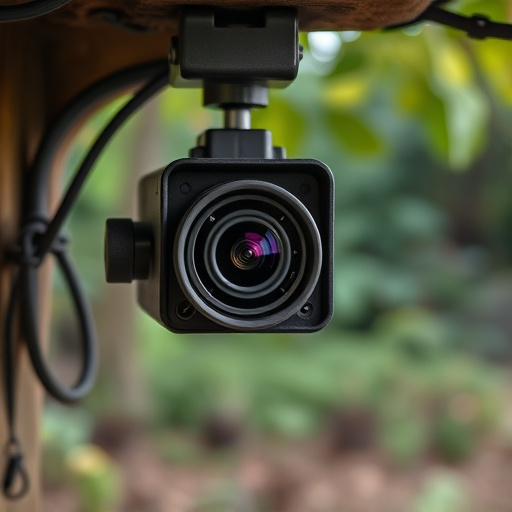Renters looking to enhance their home security with discrete security cameras should focus on placement, aiming for a balance between comprehensive coverage and subtlety. Prioritize high-traffic areas, strategically map cameras while adhering to privacy laws, inform occupants, and maintain the system through regular checks and user-friendly management tools to ensure optimal security without infringing on privacy.
“Enhance your rental property’s security with discrete camera networks—a powerful tool for landlords and property managers. This comprehensive guide explores best practices for installation, focusing on understanding tenant privacy concerns and ensuring effective surveillance. Learn how to strategically place cameras discreetly while adhering to legal guidelines. From essential equipment choices to maintenance tips, this article equips you with the knowledge needed to implement a robust security system that protects your investment. Discover the art of harnessing Discrete Security Cameras for Renters.”
- Understanding Discrete Camera Placement for Renters
- Essential Considerations Before Installing Covert Cameras
- Best Practices for Maintaining Effective Security Surveillance
Understanding Discrete Camera Placement for Renters
For renters considering discrete security cameras, understanding where to place them is key. Since you don’t have permanent fixtures, portability and flexibility are paramount. Opt for cameras that can be easily mounted on walls or ceilings with no visible wires, ensuring a sleek and discreet look. Focus on high-traffic areas like entryways, living rooms, and kitchens—places where unusual activity might go unnoticed by occupants but would stand out to viewers of recorded footage.
Remember, the goal is to create a network that provides comprehensive coverage without appearing obtrusive. Positioning cameras strategically in these areas allows you to monitor potential issues while respecting privacy. Discreet security cameras for renters strike a balance between safety and subtlety.
Essential Considerations Before Installing Covert Cameras
Before installing covert cameras, it’s crucial to consider your specific security needs and legal constraints. As a renter, discretion is key; therefore, opting for discreet security cameras designed for minimal visual impact can be beneficial. These cameras often come with remote access features, allowing you to monitor activities without drawing unnecessary attention.
When planning the installation, map out the areas you want to cover while adhering to privacy laws. Positioning cameras strategically in common areas or entry points is essential for deterring potential intruders. Ensure you inform all occupants about the camera network to maintain transparency and legal compliance.
Best Practices for Maintaining Effective Security Surveillance
Maintaining a secure and effective surveillance system requires a strategic approach, especially when dealing with discrete security cameras for renters. One of the best practices is to ensure minimal disruption to tenants’ privacy while providing comprehensive coverage. This can be achieved by carefully selecting camera placement locations that offer optimal visibility without being obtrusive. For instance, placing cameras in common areas like lobbies or hallways is ideal for deterring unauthorized access and monitoring traffic flow, while respecting individual privacy.
Regular maintenance checks are crucial to keeping the system functional. It involves testing the equipment, ensuring all cameras have clear views, and verifying the integrity of cables and connections. Additionally, keeping records of maintenance activities, software updates, and any changes in camera configurations helps in troubleshooting potential issues promptly. Discreet security cameras for renters should be designed with a user-friendly interface that allows property managers to remotely monitor and control the system, fostering an efficient security response without compromising tenants’ comfort.
When it comes to discreet security cameras for renters, a well-planned and ethical installation strategy is key. By understanding the art of discrete camera placement and adhering to essential considerations, homeowners can create an effective surveillance system without compromising privacy. Best practices involve regular maintenance and a thoughtful approach to data storage and access. With these guidelines in mind, you can enhance rental property security while respecting tenant rights, ensuring a peaceful and secure living environment for all.
